The new Bell Super 3R is an All Mountain helmet that has a removable and protective chin bar that can be easily attached and detached during a riding session. It follows in the footsteps of its 2R brethren, but they’ve added the new Float Fit retention system, MIPS protection on all models and utilized a different mold for an improved fit and an adjustable thickness system for the cheek pads on the chin bar. You can detach the chin bar and enjoy the comfort and ventilation of a regular helmet or add the chin bar and get the versatility and protection of a full-face helmet.
It comes in six colors, three sizes and retails for $230.
System works the same for the Super 3R
Even though I frequent gnarly and dangerous terrain on many of my rides, bringing a regular helmet to wear for the climbs and a full-face one for the downhill’s is cumbersome and strenuous. With the Super 3R, I can carry one helmet since it gives me the ability to switch between a standard and full-face helmet with three easy clicks, providing additional safety and security and protection when it’s required.
Construction and Features
The two-piece system includes the helmet and the chin bar which utilizes their ‘Wraparound Protection’ system, and it completely envelops the helmet and locks down in place with three ski boot-style buckles. The new Float Fit system improves the fit and comfort by revising the shape both inside and out, and it’s integrated with the MIPS or Multi-directional Impact Protection System, which is a leading slip-plane technology inside the helmet designed to reduce rotational forces that can result from certain impacts. It utilizes a Fusion In-Mold polycarbonate shell with an EPS foam liner, a Goggleguide adjustable visor system, has 23 vents, an integrated breakaway camera mount and meets EN1078 and CPSC certifications. Although it doesn’t meet the ASTM 1952 certification for downhill use, Bell did extensive impact testing, and it provided adequate protection.
Super 3R Specifications:
- Breakaway Screws
- Float Fit
- Fusion In-Mold Polycarbonate Shell
- Goggleguide Adjustable Visor System
- Integrated Breakaway Camera Mount
- MIPS-Equipped
- Overbrow Ventilation
- Wraparound Protection
- X-Static Padding
- Weight – 784.1 Grams
- Vents – 23 helmet, four brow ports, six chin-bar vents
- Certification – CE EN1078 and CPSC Bicycle
Ventilation
The Super 3R has 23 helmet vents and six chin bar vents, and they offered good ventilation for an All Mountain styled helmet. The helmet has four overbrow ports and some internal channeling, and when combined with the rest of the 23 vents, their synergy facilitates air movement and keeping things cool in the hottest conditions. Compared to a downhill helmet the Super 3R setup provided much better ventilation and cooling and comfort. Climbing with it in full-face was warmer than without the chin bar installed, so unless you’re using it for short periods of time, it’s better to remove the bar.
It uses their new Float Fit retention system, which snug’s around the head and has three height adjustments of the wheel system over the back of the head. The rubber wheel was easy to adjust using your thumb and index finger while tightening things around the head, although it was difficult to insert your fingers between the helmet and wheel when it was at the lowest height position. The ear straps tied directly into the helmet, and the adjusters used simple snap locks for closure, and they never loosened on me, and the rear strap low attachment point provided a no interference with my ears.
The chin strap system utilizes a standard quick release buckle and although I found it comfortable, the strap loosened in the buckle when taking the helmet on and off and required regular retightening for an effective and safe fit. Their X-Static padding was decently thick throughout the interior, except on the back adjuster, which didn’t have any padding. After adjusting everything for my head, I found the helmet was very comfortable, and I didn’t notice any hot or pinch spots, even after long periods of use. I have a size 23.5″ head, and the large size fit me nicely, and the retention system still allowed me enough leeway to wear a skull cap or a winter head covering. The redesign of the shape of the shell with a new mold provided a much better fit with the MIPS liner then its Super 2R predecessor, which for the proper sizing tended to fit a bit too tight.
Chin Bar System
The chin bar connects to the helmet utilizing three ski boot styled buckle latches, and there are two on each side and one at the rear. There are four internally facing protrusions on the chin bar that interface into slots on the helmet, two for the side connector and two towards the rear. Mate the male to female connections together and then clamp down the side buckles followed by the back. It’s simple to attach the chin bar to the helmet while you’re wearing it though removal can be finicky when getting gloved fingers under the side buckle levers. After locking everything down the chin bar was stable and secure and didn’t have any noticeable movement, and it felt like the helmet became one entire entity. Compared to its predecessor, the Super 2R, the buckles and insertion points have been improved and have tighter tolerances and a much firmer action, which offers greater safety and longevity. The chin bars used detachable cheek pads which were soft and plush and comfortable and had enough firmness to keep the helmet stable without much sloppiness. You can now adjust the thickness of the cheek pads by removing an inner 8mm piece of firm foam padding to alter the fit.
Helmet Coverage and Visor Functionality
The helmet provides a maximum amount of head coverage and came out over the ears and down low on the neck, which helps keep the helmet stabilized on the head and prevented it from tilting backward during a crash. The visor had a large range of motion, and it was easy to swing it down for sun protection, and upwards for better vision and perching a pair of goggles. With the chin bar installed, it suffered some peripheral vision loss, which is common to all full-face designs.
Goggle and Sunglasses Compatibility
It fit sunglasses extremely well and didn’t have any interference issues with wide lenses or long and oddly shaped arms from sunglasses. The helmet was designed for goggles since they fit properly within the confinements of the opening and the strap stayed securely in place, and could easily be perched on the helmet when the visor was tilted up. When wearing goggles it was slightly problematic when switching out the chin bar since the strap got in the way, but it was easy just to push them down onto your neck.
Weight and Extras
The helmet with the chin bar installed weighs in at 783 grams (including the camera mount), which is pretty decent for something that offers full-face protection. The helmet weighs 433 grams, and the chin bar is 335 grams, and the camera mount is 15 grams. Compared to the average AM helmet the Super 2R without the chin bar installed is on the heavy side of things though it offers a lot more protection coverage over the ears and the neck. Most downhill full-face helmets weigh around 1000-1200 grams, so this helmet is significantly lighter, and it offers more versatility and comfort and ventilation.
It comes with a removable and breakaway GoPro camera universal mount, and though it wasn’t the most stable mounting system for precision video work, I still found it useful when using my POV cameras and night lights.
Impressions
I didn’t have a front crash with the chin bar installed, but I did have several sliders, and I appreciated the side protection it offered as it prevented my face from getting scraped and banged up. The extra security and safety the helmet provided when in the full-face mode offered a comforting piece of mind. This helmet won’t take the place of a full-face downhill beast, and if I were going to spend the day at the bike park, I’d likely bring a downhill helmet instead. This helmet is perfect for an All Mountain and All Trail and Gravity Junkie riders, and it might be useful for beginners and others looking for an extra margin of safety and protection. Unless I am going to be out riding mellower rides and terrain I always bring the chin bar with me on rides. I might not always switch to full-face, but it’s nice to have a chin bar as a backup when conditions merit its installation. In normal mode, the helmet was comfortable, and it vented nicely, and I never noticed the somewhat hefty 433 grams of weight. When switched to full-face, it retained the same general comfort levels and the chin bar offered some balance to keep things stable, and aside from the slight loss of peripheral vision and decreased venting qualities, and it was a highly wearable system. When doing long climbs with the full-face, it got warm pretty quickly, and the cheek pads caused more labored breathing, so I usually removed the chin bar for those situations. It was simple to take my pack off and attach the chin bar to the helmet for the downhill’s and then stop at the bottom and switch back to normal mode for everything else.
The new Float Fit retention system was easy to use and gave instant fit adjustment and the three notched height positions helped fine tune everything. The reshaped shell provided a much better fit with the MIPS protection for each particular size, offering a bit more room compared to the too tight fit from the Super 2R model. When attaching the chin bar the insertion points and buckles all were tougher to integrate and operate compared to the Super 2R, but it made for a much tighter interface system, which offered more stability and security.
The breakaway universal GoPro mount system was handy to use, and I frequently used it for my night lights and occasionally for POV video camera recording.
Bottom Line
The comfortable Bell Super 3R offers an exceptional one helmet system, in which you can wear a regular full coverage All Mountain helmet for climbs and mellow terrain, and then switch to a full-face helmet for downhill’s, all of which provides a greater margin of safety, security, protection and versatility. It’s not a downhill full-face helmet, but it’s more comfortable and lighter and cooler and has enough safety and protection for almost any activity. Although the $230 price isn’t cheap, having the ability to switch between a standard and full-face with one helmet system makes it a worthwhile package. The new Float Fit retention system and revamped mold shape of the shell offered a more uniform and roomier fit, especially with its integration with the MIPS protection. It has great features, including the functional venting system, the breakaway GoPro mount, decent padding, lot’s of comfort and of course the useful helmet and chin bar system.
Pros
- Comfortable
- Good ventilation system – 23 helmet vents, four overbrow ports and six chin bar vents
- Excellent coverage – over the ears and low on the neck
- Mates well with both sunglasses and goggles
- Versatile – easy three click switch between normal and full-face helmet
- GoPro mount – removable and breakaway, POV cameras and night lights
- Revised helmet shape has a better fit, especially with its interfacing to MIPS
- MIPS
Cons
- Heavy – 433 grams (Large size) for normal helmet mode
- No padding on Float Fit retention system
- GoPro mount is sloppy
- Tough to lift chin bar buckles with gloved fingers, especially with the new firmer lever action
- Float Fit retention system was hard to use in lowest height position
For more information visit: bellhelmets.com
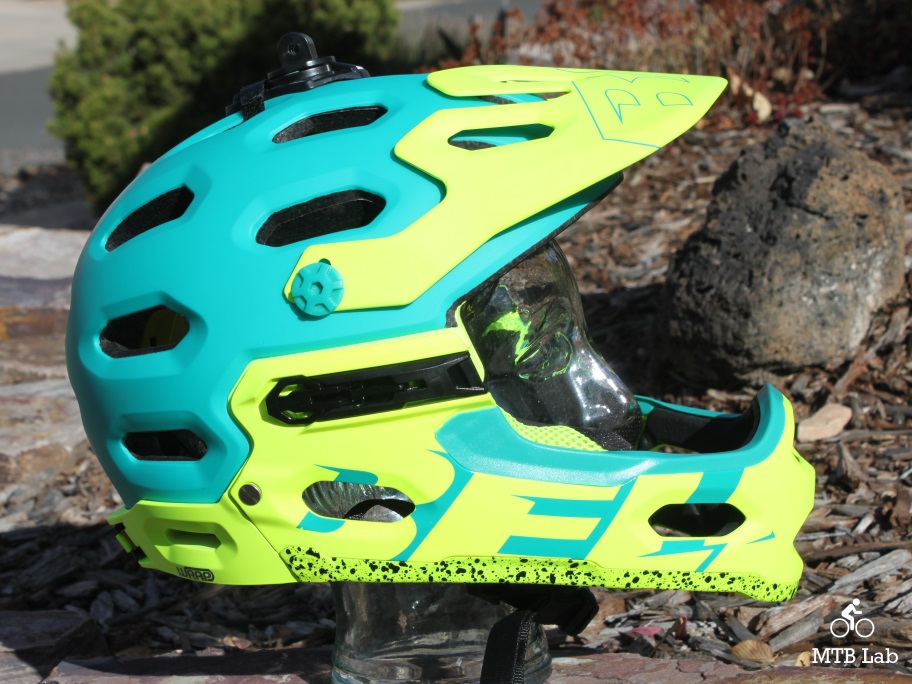
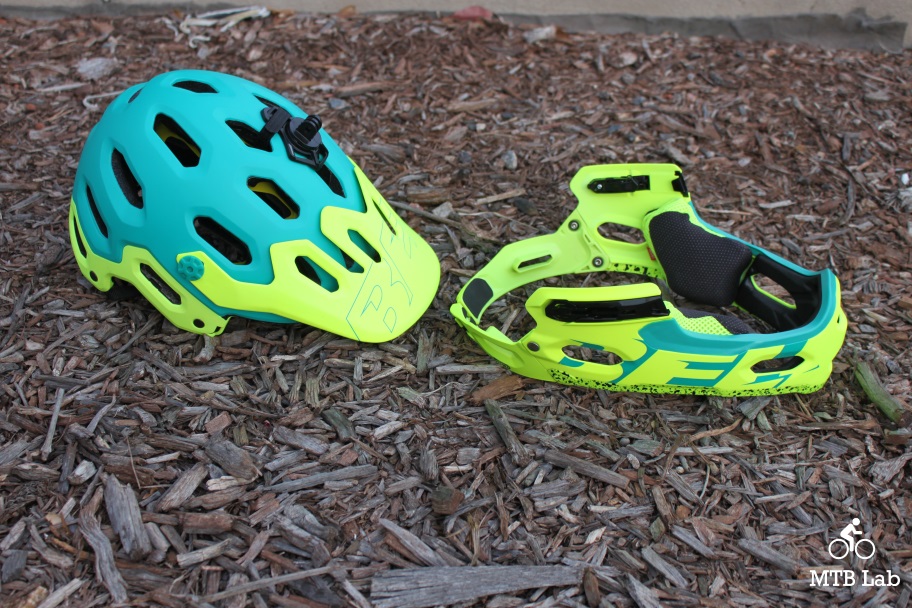
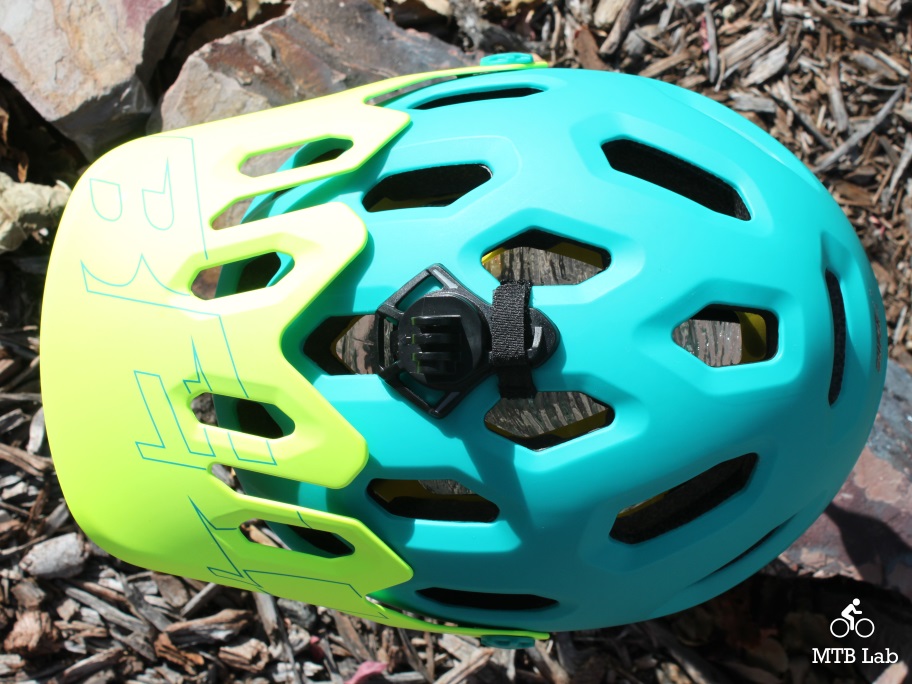
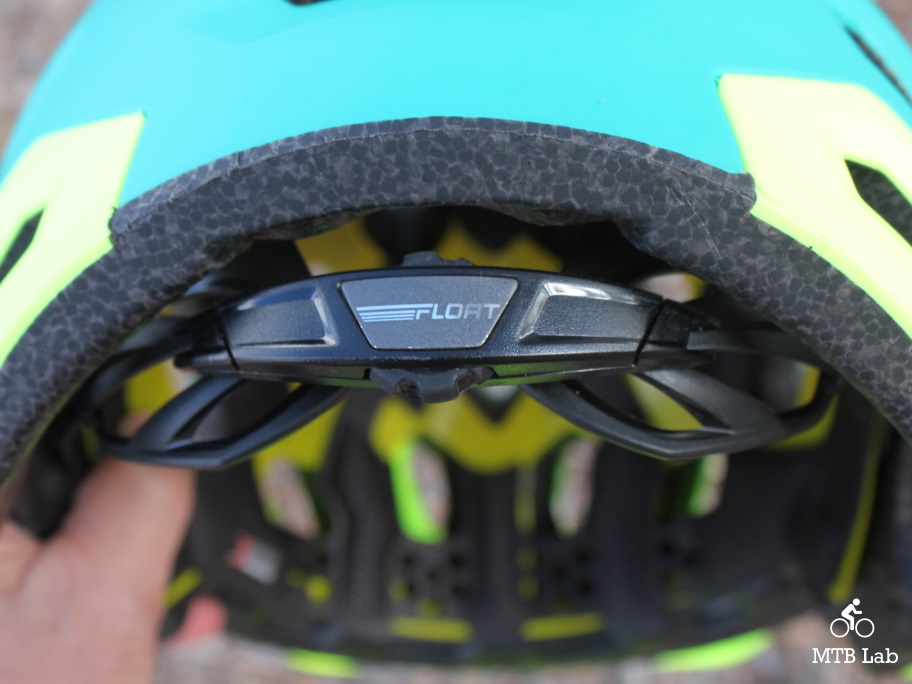
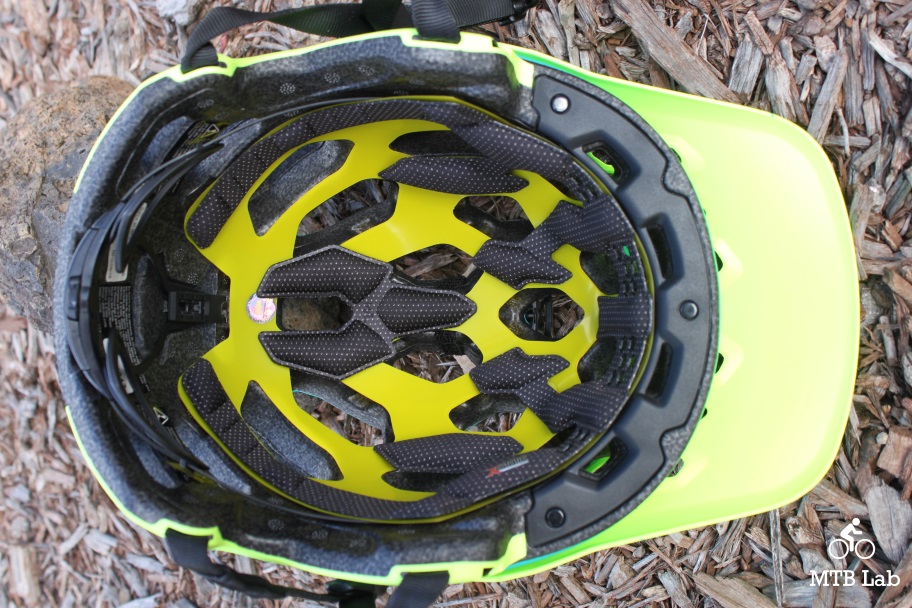
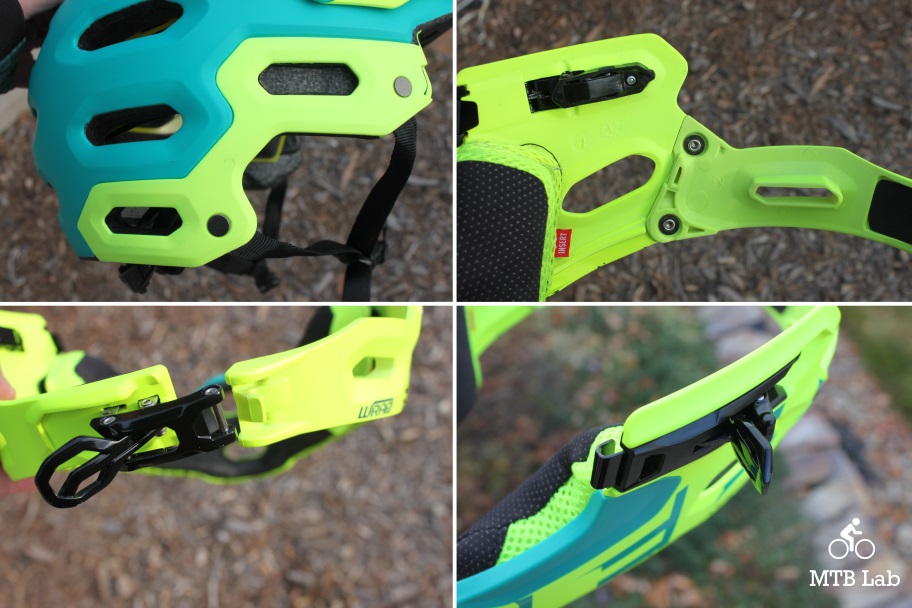
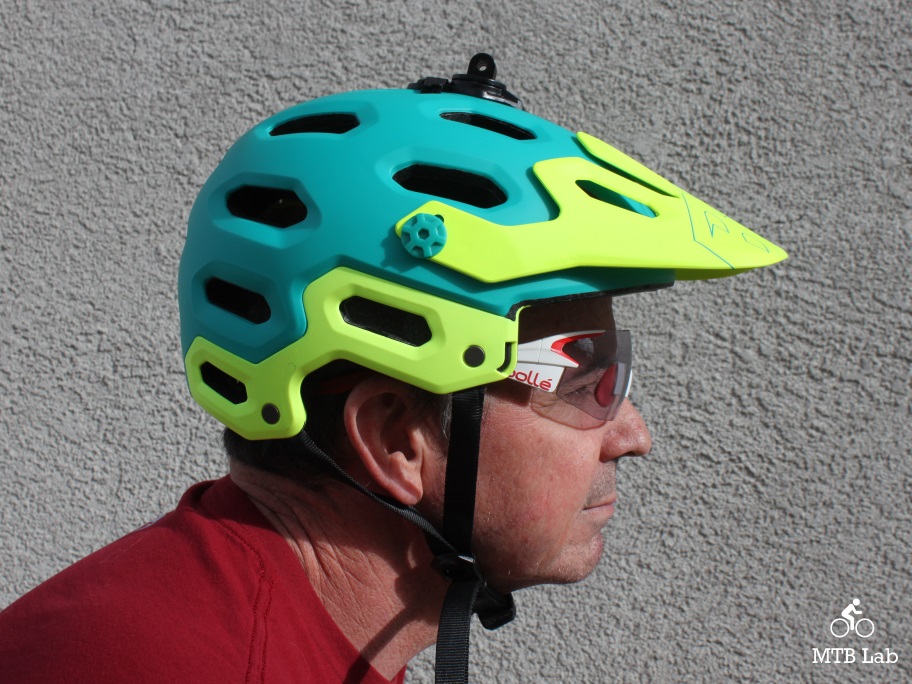
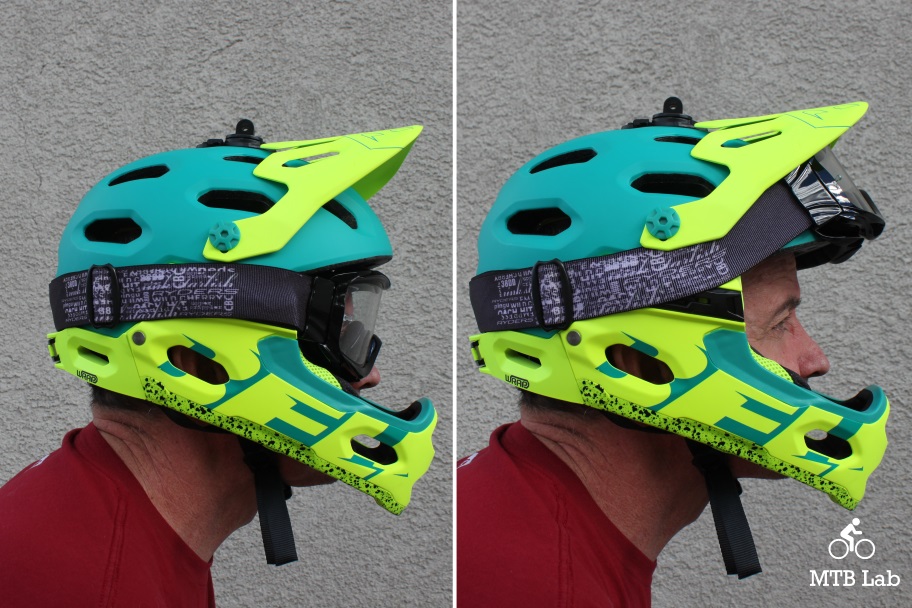
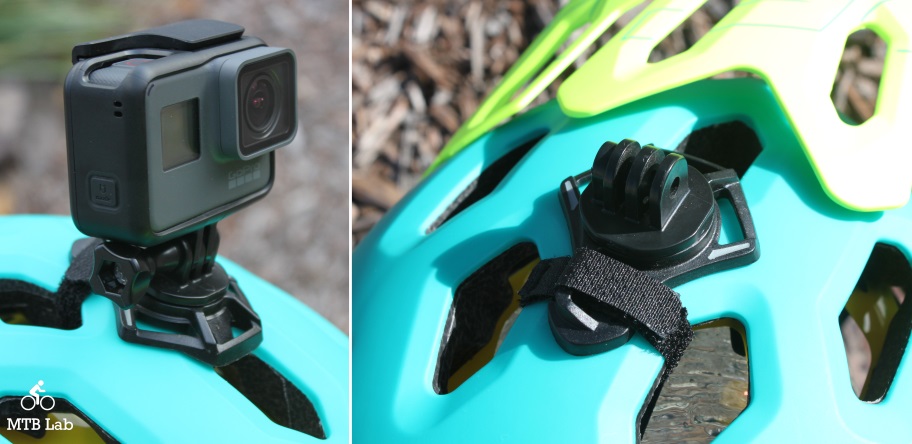
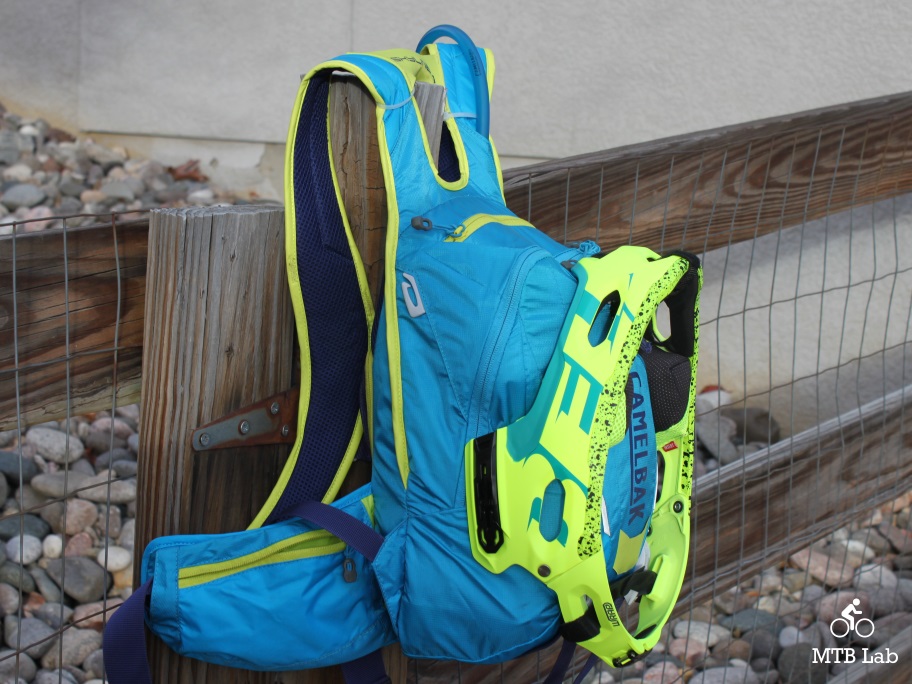
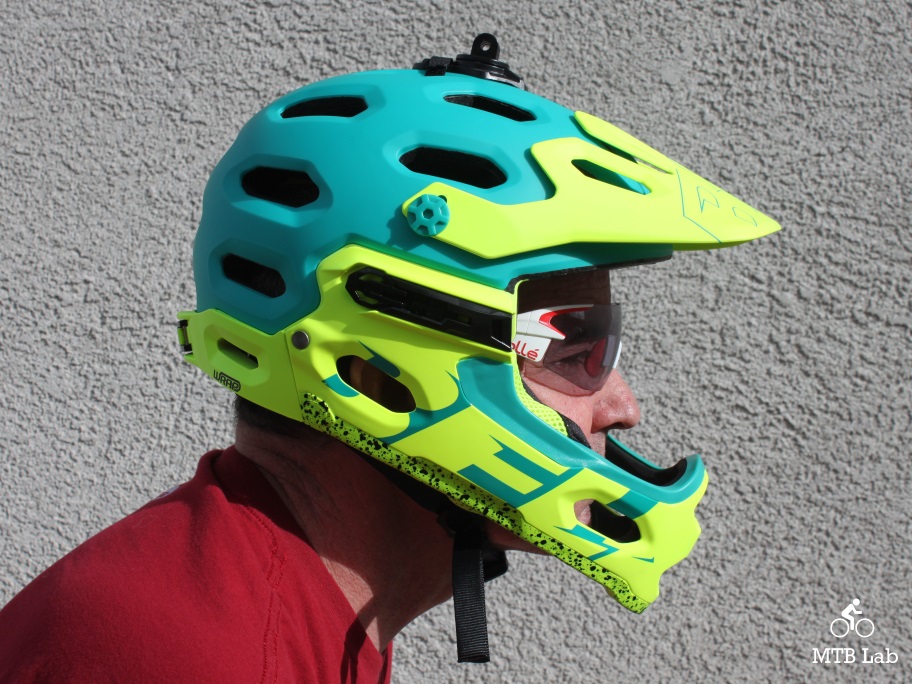





{ 2 comments… read them below or add one }
A good review, I bought this helmet 2 weeks ago and found it to be better than most I have previously worn, TLD, GIRO and FOX, my only bugbear with this system is that manufacturers still have a huge get out of jail free card should this helmet fail during a crash, you have said in your review that this is not for the downhill crowd, and yet you state that it offers added piece of mind when going down hill, as the helmet certification does not meet the required standards, but answer me this what constitutes “downhill”, if you’re ripping your favourite trail on undulating terrain and you come to a “downhill” section then what do you do, downhill is downhill, unless manufacturers define what constitutes “downhill” they will always win any action brought against them, in my opinion a multi-use helmet system should always be manufactured to the highest certification standards as most people who purchase this helmet will be doing multi-discipline mountain biking, including going down hill on any trail and bike parks, so there still lies the question, what constitutes “downhill” as most Enduro races involve downhill sections.
Great review. In fact one of the better reviews i have read about damn near anything.
Still toying with the concept of one of these vs the other similar options vs just sucking it up and sticking to my hot n heavy D3. Thanks for the detail and the photos – esp of the chin bar off. First time ive seen a decent pic of that.
Calling it a chin bar as opposed to half a helmet is i guess marketing licence!